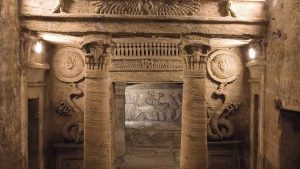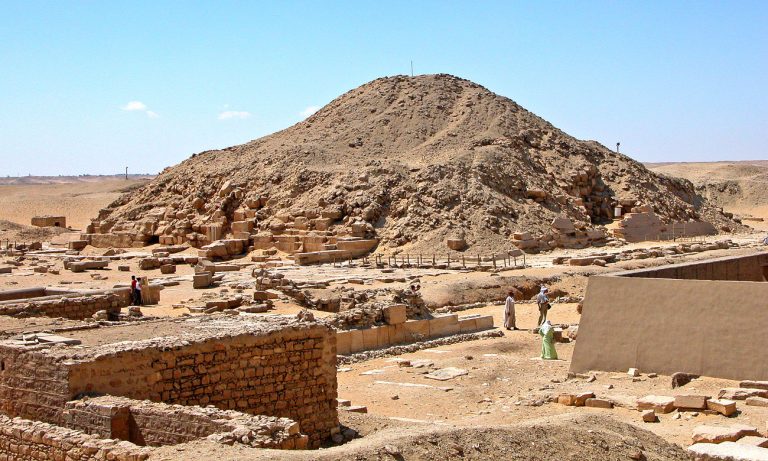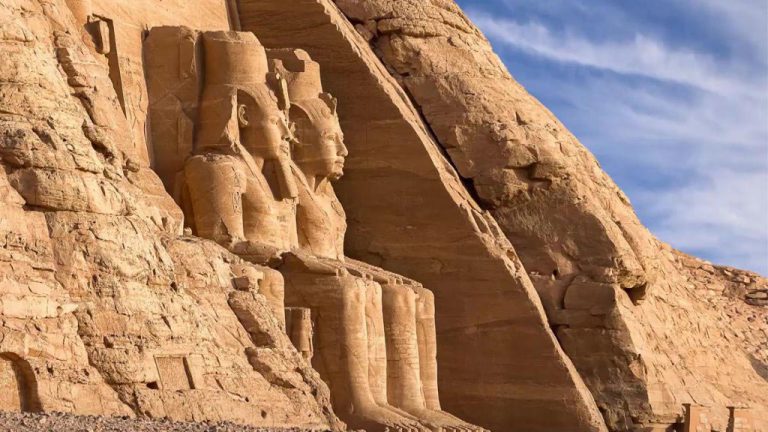Catacombs of Kom El Shoqafa: Explore Alexandria’s Ancient Underground Wonder
 The Catacombs of Kom El Shoqafa in Alexandria, Egypt, are one of the most fascinating archaeological sites in the world. Often referred to as one of the Seven Wonders of the Middle Ages, these catacombs are a stunning blend of Egyptian, Greek, and Roman art and architecture. This article provides a detailed exploration of the Catacombs of Kom El Shoqafa, targeting the most important keywords for Google Search, and includes SEO meta information to help the article rank well.
The Catacombs of Kom El Shoqafa in Alexandria, Egypt, are one of the most fascinating archaeological sites in the world. Often referred to as one of the Seven Wonders of the Middle Ages, these catacombs are a stunning blend of Egyptian, Greek, and Roman art and architecture. This article provides a detailed exploration of the Catacombs of Kom El Shoqafa, targeting the most important keywords for Google Search, and includes SEO meta information to help the article rank well.
1. Historical Background
The Catacombs of Kom El Shoqafa, meaning “Mound of Shards”, date back to the 2nd century AD during the Roman period. They were discovered accidentally in 1900 when a donkey fell into a access shaft, revealing this underground treasure.
Purpose: The catacombs served as a burial site for a wealthy family, combining Egyptian, Greek, and Roman funerary traditions.
Cultural Fusion: The site reflects the multicultural nature of Alexandria, which was a melting pot of civilizations during antiquity.
2. Architectural Design and Layout
The catacombs are a masterpiece of ancient engineering and artistry, carved into solid rock and descending three levels deep (though the third level is now submerged in water).
Key Features:
Spiral Staircase: A central staircase leads visitors down into the catacombs, symbolizing the journey to the afterlife.
Triclinium (Banquet Hall): A room where families held feasts in honor of the deceased.
Main Burial Chamber: The heart of the catacombs, featuring a circular hall with niches for sarcophagi.
Decorative Reliefs: The walls are adorned with carvings that blend Egyptian gods with Roman and Greek motifs, such as Anubis wearing Roman armor.
3. Artistic and Cultural Significance
The Catacombs of Kom El Shoqafa are renowned for their unique blend of artistic styles, reflecting Alexandria’s multicultural heritage.
Egyptian Influence: Depictions of gods like Anubis and Serapis, as well as traditional Egyptian funerary symbols.
Greek Influence: Statues and carvings in the classical Greek style.
Roman Influence: Architectural elements like the Triclinium and Roman-style clothing on statues.
4. Highlights of the Catacombs
The Hall of Caracalla
Description: A separate section of the catacombs believed to contain the remains of Christians massacred by Emperor Caracalla in 215 AD.
Significance: Adds a layer of historical depth to the site, showcasing its use across different periods.
The Central Tomb
Description: The main burial chamber features a large sarcophagus surrounded by statues and carvings.
Unique Feature: The blending of Egyptian and Roman styles is most evident here, with gods and mythological figures depicted in hybrid forms.
The Decorative Art
Description: Intricate carvings and reliefs adorn the walls, depicting scenes of daily life, mythology, and religious rituals.
Highlight: The famous Medusa heads carved into the walls, symbolizing protection for the deceased.
5. Visiting the Catacombs of Kom El Shoqafa
Location
The catacombs are located in the Karmouz district of Alexandria, about 5 kilometers from the city center.
Tips for Visitors
Best Time to Visit: Early morning or late afternoon to avoid crowds and heat.
Guided Tours: Hiring a guide is recommended to fully understand the historical and cultural significance of the site.
Photography: Photography is allowed, but flash is prohibited to preserve the ancient carvings.
6. Importance in Modern Times
The Catacombs of Kom El Shoqafa are not only a major tourist attraction but also a symbol of Alexandria’s rich history and cultural diversity.
UNESCO World Heritage Site: The catacombs are part of Alexandria’s bid for UNESCO recognition.
Archaeological Research: Ongoing studies continue to reveal new insights into the site’s history and significance.




